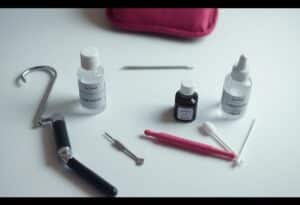Many people in the UK find themselves grappling with the challenges of earwax management, often unaware that access to treatment can vary greatly based on geographic location. Your ability to receive timely and effective care may depend heavily on your postcode, creating a disparity that can affect your quality of life. This blog post examines into the complexities surrounding earwax removal services across the UK, highlighting how these inequalities manifest and what they mean for you in navigating your healthcare options.
Key Takeaways:
- Variability in access to earwax removal services exists across regions in the UK, influenced by local NHS funding and priorities.
- Patients in certain areas face long waiting times or limited service availability, leading to disparities in health outcomes.
- Awareness of service inequalities among healthcare providers and patients is necessary for advocating for equitable access to ear care.
The Varied Landscape of Earwax Removal Services
Public Health Initiatives vs. Private Practices
In the UK, public health initiatives often focus on preventative care, which has resulted in limited funding for earwax removal services within the NHS. Consequently, patients may find themselves navigating a patchwork of private practices that offer varying levels of service quality and pricing. While some private clinics provide advanced techniques and quick appointments, the cost can be prohibitive for many, reinforcing the inequality in access to care.
Geographic Disparities: Urban vs. Rural Access
Access to earwax removal services varies dramatically between urban and rural areas, impacting your ability to receive timely treatment. Urban centers typically have a higher concentration of healthcare providers, while rural regions may lack sufficient resources, forcing residents to travel long distances for care.
Urban areas boast a rich variety of clinics and specialists, creating more options for you to choose from. For instance, London offers numerous private and NHS facilities specializing in earwax removal, often with shorter wait times. In contrast, rural residents may face a significant delay in accessing these services. Some communities have limited or even no local providers, compelling you to schedule long journeys to the nearest clinic, which can exacerbate discomfort and lead to complications if timely care isn’t received. The postcode lottery starkly reveals how geographical location can dictate the quality and promptness of your ear health services, leaving many feeling underserved and frustrated.

Navigating the NHS: A Maze of Regulations and Delays
Referral Processes and Their Impact on Timeliness
Your journey through the NHS for earwax removal typically begins with a referral from your GP. This step can introduce significant delays, as waiting times for appointments may stretch from weeks to months, depending on your locality. Some areas report waits exceeding eight weeks for non-urgent referrals, while others might expedite the process. These disparities can severely affect your access to timely care, leaving you in discomfort longer than necessary.
Availability of Treatment Commodities Across Regions
The availability of earwax removal services can vary dramatically depending on where you reside. In some regions, you may find a plethora of options, including clinics that offer microsuction and irrigation services with minimal wait times. Conversely, other areas experience severe shortages, with patients forced to wait for extended periods due to limited resources or prioritization of more urgent healthcare needs. This uneven distribution leads to a postcode lottery effect, making certain citizens reliant on nearby private facilities, often at a higher cost.
The Price of Earwax Removal: Who Can Afford It?
Understanding Costs in the Private Sector
Private earwax removal services can range from £50 to £100 per session, with additional charges for follow-up appointments or more complex procedures. These prices often vary by location and clinic, which can make budgeting for ear care increasingly difficult. Many patients opt for private services due to long NHS waiting times, but the financial outlay can be significant, especially for individuals without disposable income.
The Financial Burden on Underprivileged Areas
Residents in underprivileged areas face disproportionately high barriers to accessing earwax removal services. While private clinics proliferate in wealthier neighborhoods, those in lower-income areas may find limited options, forcing them to rely on a stretched NHS system, which can lead to long wait times and inadequate service provision.
This financial burden manifests in several ways. You might find that despite living in an area with high health needs, local clinics may charge a premium for services, pushing you to choose between imperative ear care and other necessities. Furthermore, awareness of these services is lower in underprivileged areas, leading to delays in treatment and exacerbating issues that could have been easily managed. The gap between affluent and less affluent communities expands as this issue persists, leaving many without the care they need.
The Role of GPs: Gatekeepers or Facilitators?
Variability in GP Responsiveness to Earwax Concerns
Some GPs prioritize earwax issues and readily provide referrals for treatment, while others view them as a low priority, often suggesting self-management solutions instead. This inconsistency not only affects the timely treatment of earwax buildup but can also lead to frustration among patients seeking professional help. Your experience might differ significantly based on your GP’s philosophy and resources, leading to potential delays in addressing what can be a painful and disruptive issue.
Case Examples of Differential Care Across Practices
In various regions, case studies reveal stark contrasts in how GPs handle earwax concerns. For instance, a patient in London might receive swift access to microsuction services, while a counterpart in rural Wales faces long waiting lists or is deemed ineligible for treatment altogether. These differences highlight the discrepancies rooted in local NHS policies and the subjective nature of care delivered by individual practitioners.
These case examples illustrate the systemic issues within healthcare access. For instance, a patient from a practice that routinely refers patients for earwax removal could book an appointment within a week, while another from a less proactive practice may experience delays of several months or be denied treatment on the basis of cost-cutting measures. Such variations underscore the impact of local NHS decisions, emphasizing your need to navigate these disparities to seek necessary care effectively.

The Influence of Socioeconomic Status on Health Choices
Earwax Concerns Through the Lens of Inequality
Income levels significantly shape your access to earwax removal services. If you live in a less affluent area, the likelihood of encountering delays or refusals for treatment increases. This systemic inequality often leads to untreated ear concerns, heightening risks of hearing loss and related complications, particularly among low-income individuals. In regions with fewer resources, your quality of care dramatically differs from that available in wealthier locales.
The Implications of Health Literacy on Treatment Decisions
Your health literacy significantly impacts treatment decisions surrounding earwax concerns. If you’re well-informed about the available options, you’re more likely to seek effective care. Conversely, limited knowledge can result in delayed diagnosis and worsening conditions, affecting overall quality of life.
Studies indicate that individuals with higher health literacy levels are better equipped to navigate the healthcare system, leading to more proactive health management. For example, a 2018 survey revealed that 62% of individuals with low health literacy reported skipping medical appointments, related to misunderstandings about symptoms or treatment pathways. This gap in understanding can exacerbate issues like earwax buildup, as those less informed may not recognize when to seek help or understand existing care pathways, leaving them vulnerable to further health decline.
Advocacy and Awareness: The Push for Equitable Access
Grassroots Movements and Policy Reform
Grassroots movements across the UK have emerged, rallying community members and health professionals alike to demand equitable access to earwax removal services. Activists have organized campaigns, mobilizing petitions and community forums to raise awareness about the stark contrasts in service availability. These efforts have led to calls for policy reform, urging local health organizations and government bodies to standardize and improve earwax treatment across regions, ensuring no one is left behind due to geographical disparities.
The Role of Media in Highlighting Disparities in Care
The media plays a vital role in illuminating the discrepancies in healthcare access, particularly concerning earwax management. Through investigative journalism, personal stories, and expert interviews, news outlets can shed light on the struggles individuals face due to the postcode lottery. Coverage of these disparities fosters public discourse and increases pressure on policymakers to prioritize equitable healthcare solutions.
Recent articles and broadcasts have framed earwax removal as not just a health issue but a reflection of broader systemic inequalities in the UK healthcare system. Features on patient experiences emphasize how regional variations lead to significant differences in care quality. With statistics revealing that some areas have less than half the availability of services compared to others, media narratives can drive public interest and advocacy efforts, ultimately seeking to create a more just healthcare landscape.
Innovations in Earwax Management: A Glimpse into the Future
Technological Advances: From Home Remedies to Professional Tools
Innovations in earwax management have evolved significantly, shifting from rudimentary home remedies to sophisticated professional tools. Devices like earwax removal kits, employing soft irrigation techniques, are gaining traction for at-home use. Meanwhile, professionals are utilizing advanced techniques such as micro-suction and endoscopic visualization, which enhance efficacy and safety during procedures. These technological strides can potentially offer a more effective and comfortable experience for managing earwax removal, bridging the gap between personal care and professional intervention.
The Potential of Telehealth in Addressing Access Inequities
Telehealth shines as a promising solution to the inequities surrounding earwax management access. Remote consultations can connect you with specialists, reducing travel and time constraints. Additionally, telehealth services can provide guidance on effective at-home care, helping you manage earwax concerns with professional input without needing in-person appointments. This approach could alleviate barriers faced by underserved communities, making ear health resources more universally accessible.
Incorporating telehealth into earwax management allows you to receive timely advice and treatment options from the comfort of your home. According to a recent study, telehealth services increased patient engagement by over 30%, particularly among individuals in rural areas who often struggle with access to healthcare facilities. With platforms that facilitate video consultations and online follow-ups, you can discuss concerns, receive personalized care plans, and even be directed to local services for professional cleaning when necessary. This model not only empowers you but also enhances overall healthcare equity, making ear health management more inclusive across socio-economic divides.
Final Thoughts on Bridging the Gap in Earwax Care Access
Understanding the Root Causes
Several factors contribute to the disparities in earwax care access across the UK. Geographic location plays a significant role; urban areas often have more healthcare resources, whereas rural regions struggle with availability. For instance, access to specialist ear care in rural Scotland can be significantly limited compared to metropolitan hubs like London. This uneven distribution means you may find yourself traveling long distances for basic earwax removal services.
Innovative Solutions and Best Practices
Implementing telehealth options could transform how earwax care is delivered. Utilizing remote consultations allows healthcare providers to diagnose and recommend home care strategies effectively. A study from Public Health England indicated that 25% of patients reported improved management of ear conditions through virtual appointments. You could benefit from these services, avoiding lengthy trips to clinics. Moreover, educational initiatives aimed at training non-specialist providers in earwax management techniques can also make a significant impact.
The Role of Public Health Initiatives
Public health campaigns focusing on ear health literacy can empower you and your community. By understanding the importance of earwax management, you can advocate for better access. Programs that highlight preventative care and maintenance can reduce the need for clinical interventions, saving time and resources. Local health authorities should prioritize these initiatives to ensure that everyone, regardless of their postcode, receives the ear care they need.
Call for Commitment from Stakeholders
Healthcare providers and policymakers must recognize the inequities in earwax care access. Committing to targeted funding for underserved areas and improving service delivery models will directly benefit you and others in similar situations. Partnerships between NHS trusts and local organizations could facilitate resource sharing, enhancing overall service availability. Such collaborative efforts can lead to community-specific solutions that cater directly to your needs.
A Vision for the Future
A future where earwax care is equitable is achievable through concerted action. You have the power to advocate for change by participating in local health boards or engaging with community health initiatives. Joining forces with like-minded individuals amplifies your voice, making policymakers more likely to prioritize equitable access to ear care services. Working together towards this shared goal can lead to tangible improvements in ear health for everyone, irrespective of their background or location.
FAQ
Q: What is earwax and how can it affect hearing?
A: Earwax, or cerumen, is a natural substance produced by glands in the ear canal. It helps to protect and clean the ear but can sometimes accumulate and cause blockages, leading to hearing loss, discomfort, or infection.
Q: What is the Postcode Lottery in relation to healthcare access in the UK?
A: The Postcode Lottery refers to the disparities in healthcare services and treatment availability in the UK, where residents in different regions may receive varying levels of care based on their postal code, often due to funding and resource allocation differences.
Q: How does the Postcode Lottery impact treatment for earwax removal?
A: Access to earwax removal services can vary significantly across the UK. Some areas may provide free NHS services, while others might have long waiting times or require private treatment, leading to unequal access for individuals based on their location.
Q: What steps can individuals take if they face unequal access to earwax treatment?
A: Individuals can contact their local NHS services to inquire about available options, seek recommendations for private clinics, or advocate for better services in their area. Additionally, gathering support from community health organizations can help address these disparities.
Q: Are there any alternative methods to manage earwax buildup at home?
A: Some home remedies include using ear drops, mineral oil, or saline solution to soften earwax, but these should be done with caution. It’s important to avoid inserting objects into the ear canal. Consult a healthcare professional for safe management and treatment options.



